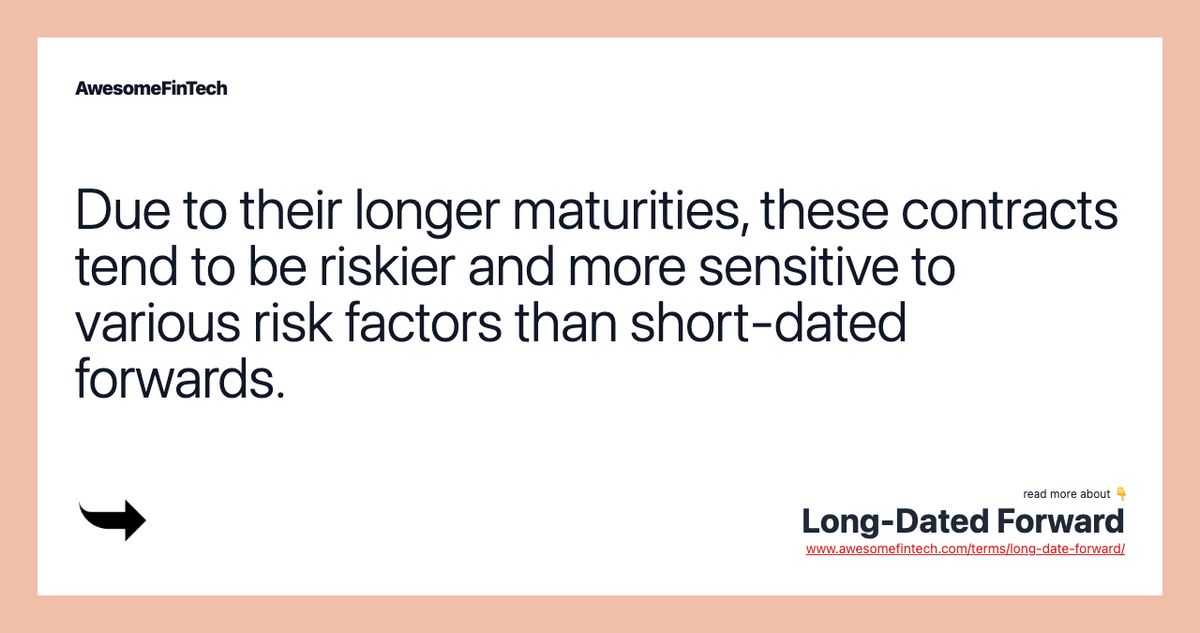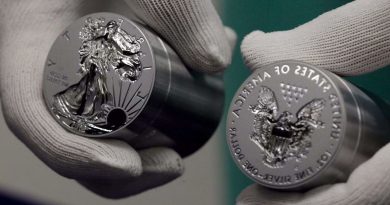Long-Dated Forward What It is How It Works

Contents
Long-Dated Forward: What It is, How It Works
What Is Long-Dated Forward?
A long-dated forward is a category of forward contract with a settlement date longer than one year away and as far away as 10 years. Companies use these contracts to hedge ongoing risks such as currency or interest rate exposures. This can be contrasted with a short-dated forward, which expires within a year.
Key Takeaways
- A long-dated forward is an OTC derivatives contract that locks in the price of an asset for future delivery, with maturities of 1-10 years.
- Long-dated forwards are often used to hedge longer-term risks, such as the delivery of next year’s crops or an anticipated need for oil in the future.
- Due to their longer maturities, these contracts tend to be riskier and more sensitive to various risk factors than short-dated forwards.
Understanding Long-Dated Forward
A forward contract is a customized contract between two parties to buy or sell an asset at a specified price on a future date. It can be used for hedging or speculation, although its non-standardized nature makes it particularly apt for hedging. Unlike standard futures contracts, a forward contract is customizable to any commodity, amount, and delivery date. Settlement can be in cash or delivery of the underlying asset.
Forward contracts trade as over-the-counter (OTC) instruments since they do not trade on a centralized exchange. While they offer complete customization, the lack of a centralized clearinghouse increases default risk. Therefore, retail investors have less access compared to futures contracts.
Long-dated forward contracts are riskier than other forwards due to the greater risk of default. Additionally, long-dated forward contracts on currencies often have larger bid-ask spreads, making their use relatively expensive.
Long-Dated Forward Example
A typical use of a foreign currency long-dated forward contract is by businesses in need of future foreign currency conversion. For example, an import/export trade enterprise needs to finance its business and must purchase merchandise now but cannot sell until later.
Consider the following example of a long-dated forward contract. A company knows it needs to have 1 million euros in one year to finance its operations. However, it is concerned that the exchange rate with the U.S. dollar (USD) will increase by that time. Consequently, it enters into a forward contract with its financial institution to buy 1 million euros at a set price of $1.1300 in one year with cash settlement.
In one year, the spot price of euros has three possibilities:
- Exactly $1.1300: In this case, no money is owed between the producer and financial institution, and the contract is closed.
- Higher than the contract price, say $1.2000: The financial institution owes the company $70,000, or the difference between the current spot price and the contracted rate of $1.1300.
- Lower than the contract price, say $1.0500: The company will pay the financial institution $80,000, or the difference between the contracted rate of $1.1300 and the current spot price.
For a contract settled in the actual currency, the financial institution will deliver 1 million euros for a price of $1.130 million, the contracted price.



